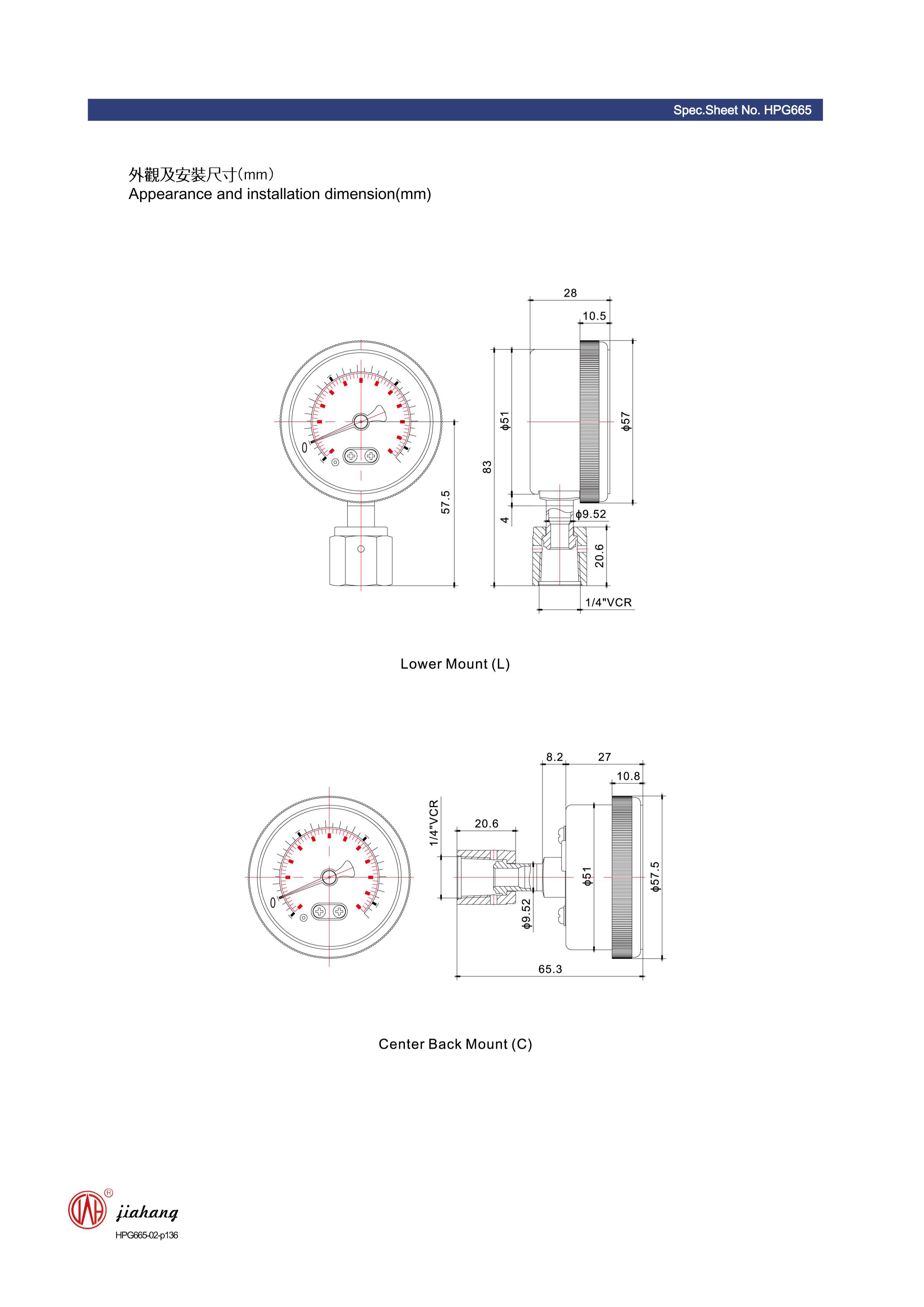
Αυγ . 09, 2024 00:35 Back to list
Exploring the Applications and Benefits of Diaphragm Pressure Gauges in Various Industries
Understanding Diaphragm Pressure Gauges Service and Applications
Diaphragm pressure gauges play a crucial role in various industries by providing accurate measurements of pressure in gases, liquids, and vapors. Their design and functionality make them ideal for applications where conventional pressure gauges may fall short due to high temperatures, corrosive materials, or other harsh environmental conditions. This article explores the service capabilities of diaphragm pressure gauges, highlighting their importance across different sectors.
Operating Principle
At the heart of a diaphragm pressure gauge is a flexible diaphragm, which responds to changes in pressure. This diaphragm is typically made from materials that resist corrosion and wear, such as stainless steel or special elastomers. When pressure is exerted on one side of the diaphragm, it deflects, causing a mechanical movement that is translated into a readable output on the gauge. This design allows for high precision in measuring pressures even in challenging situations, making diaphragm gauges indispensable in many settings.
Applications
Diaphragm pressure gauges are utilized in various industries, including oil and gas, pharmaceuticals, food processing, and water treatment. In the oil and gas sector, they are often used to monitor the pressure of gases and liquids in pipelines, ensuring safe and efficient operation. Their ability to withstand corrosive materials and extreme temperatures makes them particularly valuable in this industry.
In pharmaceutical manufacturing, accurate pressure measurement is critical to maintaining optimal conditions for production. Diaphragm gauges are used in processes involving liquid pharmaceuticals, ensuring product safety and compliance with regulatory standards. Similarly, in the food industry, these gauges help maintain the integrity of pressure-sensitive processes, such as pasteurization and carbonation, thus ensuring food safety and quality.
Advantages of Diaphragm Pressure Gauges
diaphragm pressure gauges service

One of the primary advantages of diaphragm pressure gauges is their reliability in the face of fluctuations in pressure and temperature. They can operate efficiently even in systems with pulsating pressure, thanks to their design that mitigates the impact of transient pressure spikes. Additionally, diaphragm gauges require minimal maintenance, which is essential for operations where downtime can result in significant losses.
Another benefit is their versatility. Diaphragm pressure gauges can be customized to meet the specific needs of different applications. For instance, they can be equipped with additional features, such as electrical contacts for alarms or transmitters for remote monitoring. This adaptability makes them suitable not just for standard applications but also for specialized scenarios where unique challenges exist.
Service and Calibration
Proper service and calibration of diaphragm pressure gauges are vital to ensure their long-term accuracy and reliability. Regular calibration involves comparing the readings of the gauge to a known standard. This process helps identify any deviations, allowing for necessary adjustments. Furthermore, a routine inspection helps identify any signs of wear or damage, particularly in harsh environments where factors like temperature and pressure fluctuations can impact performance.
Service providers recommend adhering to manufacturer's guidelines for maintenance and calibration intervals. By doing so, users can prevent unexpected failures and prolong the life of their gauges.
Conclusion
Diaphragm pressure gauges are essential tools in industries requiring precise pressure measurement under challenging conditions. Their unique design caters to a wide range of applications, making them indispensable in ensuring operational efficiency and safety. By prioritizing proper service and maintenance, users can maximize the reliability and longevity of these critical instruments, thus enhancing the overall efficiency of their processes. As technology advances, the capabilities of diaphragm pressure gauges will likely expand, further solidifying their role in modern industrial applications.
-
High-Precision 5 Valve Manifold Differential Pressure Gauge Suppliers
NewsApr.29,2025
-
High-Precision Diaphragm Vacuum Pressure Gauges Manufacturers & Quotes
NewsApr.29,2025
-
Omega Differential Pressure Gauges High Accuracy & Durability
NewsApr.28,2025
-
Low Pressure Differential Pressure Gauges Precision Solutions & Quotes
NewsApr.28,2025
-
Digital Diaphragm Pressure Gaauge Precision Measurement & OEM Quotes
NewsApr.28,2025
-
Differential Pressure Gauge China Price High-Accuracy & Best Quotes
NewsApr.28,2025
